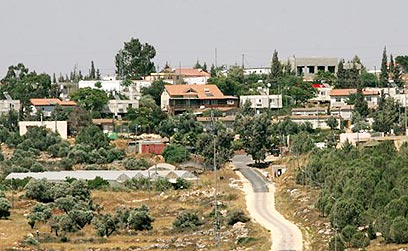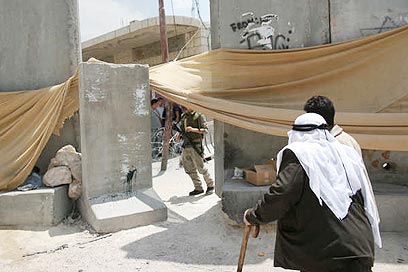
Cost of occupation – over $50 billion
Since Israel occupied Gaza and West Bank in 1967, its control over the territories has cost country more than $50 billion, and curtailed development of other sectors
According to experts' estimates, the total economic cost of the occupation has by now reached more than $50 billion, including security and civilian expenses (the construction and maintenance of the settlements), as well as the potential loss of gross domestic product.
The annual average of military expenses on maintaining control over the territory stands at about NIS 2.5 billion.
Furthermore, one of the most significant outcomes of the war was the establishment of the settlement movement in the West Bank and Gaza. Some 121 settlements have been built to this day in the West Bank (not including east Jerusalem), and are home to about 250,000 settlers.
The civilian costs in such communities are higher than in communities within the Green Line, due to the various security expenses: Armored vehicles, special lighting on highways, and large army and police forces required to defend them.

Settlement of Itamar in the West Bank (Photo: AP)
The civilian cost of the settlements is valued at about NIS 2.5 billion per year. The value of property built in the territories is estimated at over $14 billion, and the losses in domestic product for the Israeli economy due to the recession that followed the second intifada are estimated at NIS 50 billion.
Israel's periphery paying the price
In addition to the many benefits given to the settlers owing to the area's definition as a "national priority region," the State has throughout the years funded the development of infrastructure in the West bank, including roads, water, sewage, lighting systems, houses, public buildings, etc.
Lastly, the cost of the 790-kilometer security fence is expected to total some NIS 10 billion (NIS 5 billion have been invested so far). While the fence certainly helps decrease the number of terror attacks inside Israel, its length had to be doubled due to the distribution of settlements in the West Bank and the requirement to build the fence around them.

Separation fence (Photo: Dudi Vaknin)
Experts noted that the occupation of the West Bank had many indirect implications as well, including its affect on shifting investments from the development towns and Israel's periphery to the settlements; the use of cheap Palestinian labor until the first intifada and their consequent replacement with foreign workers, at the expense of Israeli workers; cutbacks in health, education and welfare budgets due to the high cost of the settlement project; and the constant relative growth in the security budget since 1967.
Terrible distortion
"Imagine how much less poverty there could have been in Israel," said Dr Ruby Nathanzon of the Macro Center for Political Economy. "There's a terrible distortion, an enormous economic cost in addition to the huge military burden."MK Chaim Oron (Meretz), member of the Knesset's Finance Committee, admitted that he opposed the occupation for Zionist, rather than economic, considerations, but added that, "The priorities are certainly distorted, and we are talking about a waste of dozens of billions of shekels."
On the other hand, MK Zvi Hendel (National Union) stated, "A state is not measured in money. It would be cheaper to house all of the Negev and Galilee's residents in Tel Aviv hotels, but the consideration isn't an economic one. You could also say that instead of founding the State of Israel we could have rented a few streets in New York."
He added, "Eventually, it doesn't matter where you set up a community, this will always cost money."
The cost of the withdrawal
The evacuation of some 8,000 settlers from Gush Katif in Gaza cost the State of Israel some NIS 8 billion, an average of NIS 1 million per person. Meanwhile, the population in some of the settlements in the West bank belongs to a higher socioeconomic stratum, and its evacuation is therefore expected to cost more. The evacuation of the 250,000 settlers of the West Bank is expected to stand at more than NIS 250 billion.










